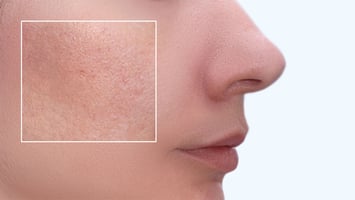Achieving healthy, radiant skin is a goal for many, and one essential step is minimizing the...
Undereye Puffiness: Strategies for Depuffing Your Eyes and Getting a Brighter, Refreshed Look
Introduction
The eyes are often referred to as the windows to the soul, but they can also reveal signs of fatigue, stress, and aging. Undereye puffiness, also called "bags under the eyes", characterized by swelling and inflammation, can make you look tired and older than you feel. However, there are various effective strategies and remedies to depuff your eyes and regain a refreshed, youthful appearance. In this comprehensive guide, we'll explore the causes of undereye puffiness, preventive measures, and a variety of treatments that range from lifestyle changes to soothing home remedies and advanced skincare techniques.
Understanding the Causes
Before delving into depuffing solutions, it's crucial to understand the common causes of undereye puffiness. Understanding these factors can help you adopt preventive measures and choose the most suitable treatments. Some common reasons for undereye puffiness include:
Fluid Retention: Fluid can accumulate in the delicate tissues around the eyes, leading to puffiness. This can be caused by factors such as excessive salt intake, dehydration, hormonal changes, and certain medical conditions.
Lack of Sleep: Insufficient sleep or poor sleep quality can contribute to puffy eyes. During sleep, the body undergoes repair and rejuvenation, and lack of proper rest can lead to fluid buildup around the eyes.
Allergies: Allergic reactions, particularly to pollen, dust, or certain cosmetic products, can cause eye puffiness. Allergies trigger the release of histamines, leading to inflammation and swelling.
Aging: As we age, the skin around the eyes becomes thinner and loses collagen and elasticity, making it more prone to puffiness and wrinkles.
Genetics: Some individuals may be genetically predisposed to developing puffy eyes. If your parents or close relatives have this concern, you might be more susceptible to it as well.
Preventive Measures
Preventing undereye puffiness involves adopting healthy lifestyle habits and making conscious choices to minimize potential triggers. Here are some preventive measures to consider:
Stay Hydrated: Proper hydration is crucial for overall health and can help prevent fluid retention. Aim to drink at least eight glasses of water a day.
Limit Salt Intake: Excessive salt consumption can contribute to water retention. Be mindful of your sodium intake by avoiding overly processed and salty foods.
Get Sufficient Sleep: In the hustle and bustle of modern life, attaining a sufficient amount of sleep at night has become an increasingly challenging task for many individuals. But it is of the utmost importance that you ensure that you’re getting 7-9 hours of quality sleep each night. Establish a consistent sleep routine to promote better rest.
Manage Allergies: Identify and manage any allergies you may have. This may involve using allergy-friendly cosmetics, changing bedding regularly, and addressing environmental allergens.
Use Sunscreen: Protect the delicate skin around your eyes from sun damage by using sunscreen or sunglasses with UV protection.
Depuffing Strategies
Home Remedies:
Cold Compress
The application of a cold compress is a classic remedy for depuffing eyes. The cold temperature helps constrict blood vessels, reducing inflammation and undereye puffiness. You can use a cold compress or place chilled cucumber slices on your closed eyelids for 10-15 minutes. The soothing sensation can provide instant relief.
Tea Bags
Tea bags, particularly green tea or chamomile, contain antioxidants and anti-inflammatory properties. After steeping and cooling the tea bags, place them on your closed eyes for around 15 minutes. The natural compounds in tea can help reduce swelling and rejuvenate tired eyes.
Aloe Vera
Aloe vera is well-known for its soothing and anti-inflammatory properties. Applying a small amount of aloe vera gel around your eyes and leaving it on for 15-20 minutes can provide a refreshing and depuffing effect. Make sure to choose pure aloe vera gel without added chemicals or fragrances.
Potato Slices
Potatoes contain enzymes and vitamin C, making them a natural remedy for puffiness. Place thin slices of raw potato on your closed eyes for about 15 minutes. The coolness of the potatoes, along with their beneficial properties, can help reduce swelling and brighten the eye area.
Skincare Techniques:
Eye Creams
Choosing the right eye cream is essential for addressing puffiness. Look for products containing caffeine, which can constrict blood vessels, reducing swelling. Hyaluronic acid helps improve hydration, and peptides contribute to skin firmness. Consistent use of an effective eye cream as part of your skincare routine can lead to noticeable improvements.
Massage
Gently massaging the area around your eyes with your ring finger can stimulate lymphatic drainage, helping to reduce fluid buildup. Use a light touch and circular motions to avoid putting excessive pressure on the delicate skin. Incorporate this into your daily skincare routine for long-term benefits.
Hyaluronic Acid Serums
Hyaluronic acid is a powerful hydrating ingredient that attracts and retains moisture. Using a hyaluronic acid serum can plump and moisturize the skin around your eyes, reducing the appearance of puffiness. Apply the serum before your moisturizer to maximize its effectiveness.
Retinol Products
Retinol, a derivative of vitamin A, is known for its anti-aging properties. It promotes collagen production and improves skin elasticity, making it a valuable ingredient for addressing aging-related puffiness. Incorporate a retinol-based eye cream into your nighttime skincare routine, and be consistent to see long-term results.
Advanced Treatments:
Microcurrent Therapy
Microcurrent therapy involves the use of low-level electrical currents to stimulate facial muscles. This non-invasive treatment can improve skin tone, reduce puffiness, and diminish the appearance of fine lines and wrinkles. Professional microcurrent treatments are available, or you can explore at-home devices under the guidance of a skincare professional.
Chemical Peels
Chemical peels can be effective for rejuvenating the skin around the eyes. They exfoliate the outer layer of skin, promoting cell turnover and collagen production. A dermatologist can recommend the most suitable peel for your skin type and concerns. Chemical peels require careful consideration and should be performed by a trained professional.
Fillers
Injectable fillers containing hyaluronic acid can add volume to the under-eye area, reducing the appearance of hollow or sunken areas. This minimally invasive procedure is performed by a qualified injector and can provide immediate results. The effects typically last several months, making it a popular choice for addressing under-eye concerns.
Laser Therapy
Laser treatments target specific skin concerns, including laxity and wrinkles around the eyes. By stimulating collagen production and tightening the skin, laser therapy can improve overall eye appearance. Consult with a dermatologist or skincare professional to determine the most appropriate laser treatment for your needs.
Conclusion
Reducing undereye puffiness involves a combination of preventive measures, home remedies, skincare techniques, and, in some cases, professional treatments. Tailor your approach based on the underlying causes of your undereye puffiness and your individual preferences. By adopting a holistic approach to eye care, you can enjoy a brighter, refreshed appearance and regain confidence in the windows to your soul. Remember, consistency is key, so be patient and persistent in your efforts to depuff and rejuvenate your eyes. With the right strategies, you can put your best face forward, showcasing a vibrant and youthful look that mirrors your inner vitality.




